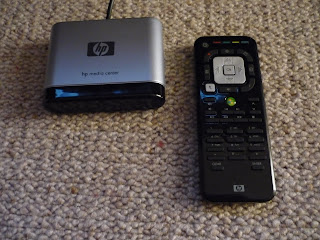The modern world is not rubbish. You can come home from work and find a spanner has been delivered to your doorstep. That wouldn't happen in the 80's.
 |
| Tomato for scale. It's a quite large cherry tomato. |
|
|
|
|
|
|
|
|
|
|
|
|
The reason I need this spanner is despite
earlier optimism, the "Check Engine" light on my R170 Mercedes SLK keeps coming on, showing error P0410 on the scanner. And none of my existing spanners will do. And who doesn't like more spanners?
 |
| Stop Doing that. |
After extensive research (i.e. Google) it would appear I need one of these:
 |
| Part Number A0021406860. Or £50 as it is more commonly known. |
The generic description of the P0410 error is something like "Air pump or associated wiring failed". It's to do with the part of the emissions system which pumps air into the exhaust for some reason. Only my car doesn't have an electric air pump - instead it uses the supercharger and a series of valves of which this is just one.
So all I need to do is unbolt the old one and and bolt this one in.
Yes, that's how it works.
Regrettably. the old one is here:
 |
| Yes that's right - you can barely see it. It's between the back of the engine and the bulkhead nestling in a bundle of tubes and wires. Follow the rubber hose up from the bottom left. The other side of it is threaded into a metal pipe. |
I've taken off all the fancy engine covers to reveal it - they are removed by the "pulling very hard" method.
So:
- You can't actually get a spanner on it because the bolt hex part is too thin for a normal spanner.
- If you could get a spanner on it, you can't turn it because there is no clearance
- It's ultimately attached to the exhaust so it's virtually welded on with grot and heat.
Splendid.
First attempt I tried making tools out of bits of scrap metal:
 |
| I am skilled toolmaker |
These variously bent, twisted off and ruined my knuckles.
Next I decided to remove the long pipe the valve is screwed into which snakes around the engine and opens into the exhaust manifold, then I could get it onto the bench. In my previous attempts with the home-made tools this was flexing alarmingly and I don't even want to know how much a new one costs.
 |
| I am replacing part 250. |
The pipe (200) attaches to the manifold with this funky bolt (230) that you can't even seen - I needed my new 27mm spanner and sixth sense to get it off.
 |
| Removed (and replaced) using ESP. Don't loose the two malleable washers. |
Annoyingly, once I removed that and the additional two bolts (210, 220) that hold the pipe in place, it was still jammed in. I managed to rotate it enough I could get at it though:
 |
| Yes, so very much more accessible. |
The dirty great pipe spanner was used to hold the pipe (oddly enough - I do like to use the right tool for the job) in an effort to stop twisting the fitting off the end and also to help stop bending it; a serious amount of force was required to get the valve off. That was partially successful in that it only bent a bit making it just a slight mare to get back into place.
The hose clamp (270) isn't re-usable so was cut off and my Mercedes now sports a beautifully made clamp rescued from a 1970s Alfa Romeo. I think the clamp is the only bit of that car that didn't turn to dust.
The valve itself is a one-way valve - I could easily blow through the new one in one direction but the old one was blocked both ways - definitely broke and most likely the problem. When I went into the immaculately presented parts desk at the Mercedes dealer the lady there didn't even need to go look for it - she had a box full of them under the counter. Not an uncommon problem, perhaps. The fault has been reset again so hopefully that will be the end of it.
That's a good 3 hour job by the time you are finished messing about. My hands may take longer to mend.




























